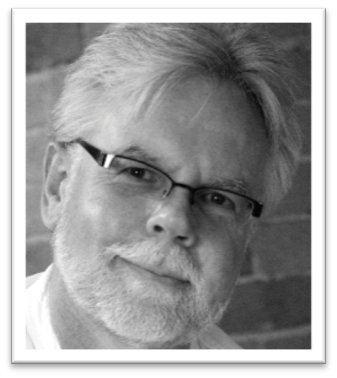
BY: JULIA RENAUD
Brain Health
As a brain injury survivor, these two enchanting words instantly grab my attention and get me craving to learn more. Lucky for me, this was the topic of BIST’s August Community Meeting, and guest speaker, Paul Hyman, had my full attention. Paul is a wonderfully accomplished champion for the brain injury community and he comes with a very impressive resume (check out his website if you don’t believe me). Among all of his accomplishments, he is most well known for being the president and founder of Brain Fitness International, an organization that helps those living with a brain injury to maximize their potential and live better lives.
Paul began the evening with a quick one liner to explain what ‘brain health’ means to him: movement-based, multi-sensory brain stimulation. Put simply, this means that through movement and engaging your senses you are actually helping your brain. To elaborate upon this concept, Paul used the example of a student who was taking a class and, to the professor’s dismay, knitted throughout every lecture rather than taking notes. To the professor’s astonishment, this student ended up far exceeding the professor’s expectations come the completion of the course. Because knitting utilizes both sides of the body, and therefore, both hemispheres of the brain, the student was able to better absorb the information. For this reason, a pipe cleaner (the craft supply) was handed out to each community meeting attendee to fiddle with, using both hands, throughout the presentation. I have been using this pipe cleaner trick for about a week now and, when I do, I feel like I’m better at absorbing and recalling information; so, if it tickles your fancy give it a try!
The point that Paul chose to emphasize was that movement stimulates the brain. If you don’t believe me, lift your arms high in the air and shake your hands around. Just by moving, you are improving your capacity to learn, memorize, and recall information. If you’re currently struggling with brain injury and some sticky symptoms, this may be exhausting; but, as Paul says, movement is great for the brain – try it out and see how you feel.
Further to movement being a brain stimulant, a principle that has been known for many years now was also highlighted, ‘Neurons that fire together, wire together.’ This speaks to the neuroplasticity of the brain, how the brain is capable of forming new connections.
Using both body and breath to stimulate the brain is a fantastic way to facilitate recovery and also leaves you feeling great. We went through several activities over the course of the evening, and below I will share some of my favourites. I’ve included some fun names for each exercise to hopefully make them easier to recall.
Activities
Paul used to be a professional trombone player, to which he credits learning the importance of the breath. This first exercise is intended to help you become accustomed to taking slower and deeper breaths. All you need is a tissue! I call this one, the tissue trap:
The Tissue Trap:
- Take a tissue and hold it up against a wall.
- Exhale slowly and deeply onto the tissue so that it stays stuck to the wall without you needing to hold it in place. Do this as slowly as possible.
- For added fun, you can time yourself or challenge others to see who can hold it the longest. (New party trick, maybe?)
- Vary this exercise by blowing puffs of air instead of a steady stream. If you don’t have a wall handy, use another surface like a book, or hold the tissue between your fingers and watch the tissue fly as you control it using your breath.
This next exercise utilizes both hemispheres of the brain and helps them to work together. It is commonly referred to as eye tracking or lazy 8’s. For a more detailed explanation, click here, otherwise follow the steps below:

Eye Tracking/Lazy 8’s:
- Outstretch your arm in front of you so it’s perpendicular to the floor.
- Make the thumbs up sign with the hand of your outstretched arm.
- Move your arm to draw a big, imaginary infinity sign (an 8 on its side, see above). Continue to do this motion.
- While keeping your head still and facing forward, move your eyes to keep your gaze on your thumb as it moves around.
- Try this out with your other arm and/or with your fingers interlaced.
- Vary the direction of your figure 8. For example, instead of going up the middle every time, try going down the middle.
If you prefer, you may like to draw your lazy 8 on a piece of paper or white board. This can be particularly handy if you get dizzy from drawing them in the air.
Brain Gym PACE
PACE is a Brain Gym mnemonic for Positive, Active, Clear, and Energetic, which together, form a technique for warming up both your brain and your body to maximize your capacity to learn. Now, I’ve been trying to figure out how to describe this practice using only words for a while, but lucky for me, and let’s be honest, you too, I stumbled on this handy video that captures PACE in a straightforward way.

The BIST community meeting attendees really enjoyed Paul’s presentation as he was an excellent speaker with a very engaging presentation. I’ve been told that he will likely return for more presentations in the future so stay tuned!
In the mean time, don’t forget to check out the BIST calendar or all types of events.
October Community Meeting: Join us for our Halloween Party on October 31st!
November Community Meeting: Essential Oils & & ABI with Rose-Ann Partridge – November 28th, 6 – 8 pm
FEATURED IMAGE: Paul Hyman, Creator and CEO of Brain Fitness International




